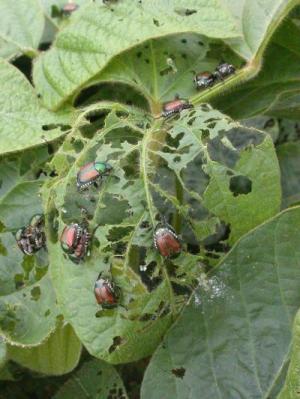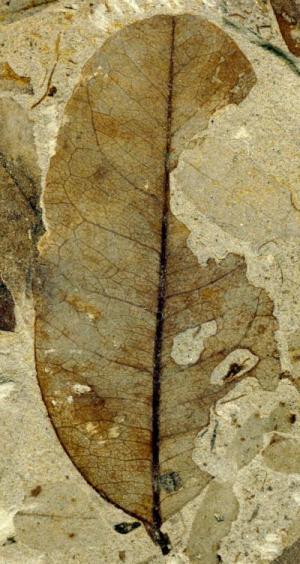 Arguments
Arguments
 Software
Software
 Resources
Comments
Resources
Comments
 The Consensus Project
The Consensus Project
 Translations
Translations
 About
Support
About
Support


Latest Posts
- Sabin 33 #22 - How does waste from wind turbines compare to waste from fossil fuel use?
- Clean energy generates major economic benefits, especially in red states
- 2025 SkS Weekly Climate Change & Global Warming News Roundup #13
- Skeptical Science New Research for Week #13 2025
- Climate skeptics have new favorite graph; it shows the opposite of what they claim
- Sabin 33 #21 - How does production of wind turbine components compare with burning fossil fuels?
- China will need 10,000GW of wind and solar by 2060
- 2025 SkS Weekly Climate Change & Global Warming News Roundup #12
- Skeptical Science New Research for Week #12 2025
- Climate Fresk - a neat way to make the complexity of climate change less puzzling
- Sabin 33 #20 - Is offshore wind development harmful to whales and other marine life?
- Do Americans really want urban sprawl?
- 2025 SkS Weekly Climate Change & Global Warming News Roundup #11
- Fact brief - Is waste heat from industrial activity the reason the planet is warming?
- Skeptical Science New Research for Week #11 2025
- Visualizing daily global temperatures
- Sabin 33 #19 - Are wind turbines a major threat to wildlife?
- The National Hurricane Center set an all-time record for forecast accuracy in 2024
- 2025 SkS Weekly Climate Change & Global Warming News Roundup #10
- Fact brief - Is Greenland losing land ice?
- The Cranky Uncle game can now be played in 16 languages!
- Skeptical Science New Research for Week #10 2025
- Climate Adam: Protecting our Planet from President Trump
- Sabin 33 #18 - Can shadow flicker from wind turbines trigger seizures in people with epilepsy?
- Cuts to U.S. weather and climate research could put public safety at risk
- 2025 SkS Weekly Climate Change & Global Warming News Roundup #09
- Fact brief - Are high CO2 levels harmless because they also occurred in the past?
- Skeptical Science New Research for Week #9 2025
- Is CO2 plant food? Why are we still talking about this?
- Sabin 33 #17 - Does low-frequency noise from wind turbines cause 'wind turbine syndrome'?
Archived Rebuttal
This is the archived Basic rebuttal to the climate myth "CO2 is plant food". Click here to view the latest rebuttal.
What the science says...
|
More Carbon Dioxide in the atmosphere is not necessarily good for plants. |
An argument made by those who prefer to see a bright side to climate change is that carbon dioxide (CO2) being released by the burning of fossil fuels is actually good for the environment. This conjecture is based on simple and appealing logic: if plants need CO2 for their growth, then more of it should be better. We should expect our crops to become more abundant and our flowers to grow taller and bloom brighter.
However, this "more is better" philosophy is not the way things work in the real world. There is an old saying, "Too much of a good thing can be a bad thing." For example, if a doctor tells you to take one pill of a certain medicine, it does not follow that taking four is likely to heal you four times faster or make you four times better. It's more likely to make you sick.
It is possible to boost growth of some plants with extra CO2, under controlled conditions inside of greenhouses. Based on this, 'skeptics' make their claims of benefical botanical effects in the world at large. Such claims fail to take into account that increasing the availability of one substance that plants need requires other supply changes for benefits to accrue. It also fails to take into account that a warmer earth will see an increase in deserts and other arid lands, reducing the area available for crops.
Plants cannot live on CO2 alone; a complete plant metabolism depends on a number of elements. It is a simple task to increase water and fertilizer and protect against insects in an enclosed greenhouse but what about doing it in the open air, throughout the entire Earth? Just as increasing the amount of starch alone in a person's diet won't lead to a more robust and healthier person, for plants additional CO2 by itself cannot make up for deficiencies of other compounds and elements.
What would be the effects of an increase of CO2 on agriculture and plant growth in general?
1. CO2 enhanced plants will need extra water both to maintain their larger growth as well as to compensate for greater moisture evaporation as the heat increases. Where will it come from? In many places rainwater is not sufficient for current agriculture and the aquifers they rely on are running dry throughout the Earth (1, 2).
On the other hand, as predicted by climate research, we are experiencing more intense storms with increased rainfall rates throughout much of the world. One would think that this should be good for agriculture. Unfortunately when rain falls in short, intense bursts it does not have time to soak into the ground. Instead, it quickly floods into creeks, then rivers, and finally out into the ocean, often carrying away large amounts of soil and fertilizer.
2. Unlike Nature, our way of agriculture does not self-fertilize by recycling all dead plants, animals and their waste. Instead we have to constantly add artificial fertilizers produced by energy-intensive processes mostly fed by hydrocarbons, particularly from natural gas which will eventually be depleted. Increasing the need for such fertilizer competes for supplies of natural gas and oil, creating competition between other needs and the manufacture of fertilizer. This ultimately drives up the price of food.
3. Too high a concentration of CO2 causes a reduction of photosynthesis in certain of plants. There is also evidence from the past of major damage to a wide variety of plants species from a sudden rise in CO2 (See illustrations below). Higher concentrations of CO2 also reduce the nutritional quality of some staples, such as wheat.
4. As is confirmed by long-term experiments, plants with exhorbitant supplies of CO2 run up against limited availability of other nutrients. These long term projects show that while some plants exhibit a brief and promising burst of growth upon initial exposure to C02, effects such as the "nitrogen plateau" soon truncate this benefit
5. Plants raised with enhanced CO2 supplies and strictly isolated from insects behave differently than if the same approach is tried in an otherwise natural setting. For example, when the growth of soybeans is boosted out in the open this creates changes in plant chemistry that makes these specimens more vulnerable to insects, as the illustration below shows.

Figure 1: Plant defenses go down as carbon dioxide levels go up, the researchers found. Soybeans grown at elevated CO2 levels attract many more adult Japanese beetles than plants grown at current atmospheric carbon dioxide levels. Science Daily; March 25, 2008. (Credit: Photo courtesy of Evan Delucia)
Figure 2: More than 55 million years ago, the Earth experienced a rapid jump in global Carbon Dioxide levels that raised temperatures across the planet. Now, researchers studying plants from that time have found that the rising temperatures may have boosted the foraging of insects. As modern temperatures continue to rise, the researchers believe the planet could see increasing crop damage and forest devastation. Science Daily; Feb. 15, 2008.
Figure 3: Global Warming reduces plant productivity. As Carbon Dioxide increases, vegetation in Northern Latitudes also increases. However, this does not compensate for decreases of vegetation in Southern Latitudes. The overall amount of vegetation worldwide declines
6. Likely the worst problem is that increasing CO2 will increase temperatures throughout the Earth. This will make deserts and other types of dry land grow. While deserts increase in size, other eco-zones, whether tropical, forest or grassland will try to migrate towards the poles. Unfortunately it does not follow that soil conditions will necessarily favor their growth even at optimum temperatures.
In conclusion, it would be reckless to keep adding CO2 to the atmosphere. Assuming there are any positive impacts on agriculture in the short term, they will be overwhelmed by the negative impacts of climate change.
Added CO2 will likely shrink the range available to plants while increasing the size of deserts. It will also increase the requirements for water and soil fertility as well as plant damage from insects.
Increasing CO2 levels would only be beneficial inside of highly controlled, enclosed spaces like greenhouses.
Basic rebuttal written by doug_bostrom
Update July 2015:
Here is a related lecture-video from Denial101x - Making Sense of Climate Science Denial
Updated on 2015-07-08 by MichaelK.
THE ESCALATOR

(free to republish)

























































